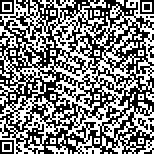| 本文已被:浏览 2112次 下载 1031次 |

码上扫一扫! |
|
|
| 基于18S rDNA条形码技术的珊瑚礁区塔形马蹄螺(Tectus pyramis)食性分析 |
|
周天成1,2, 胡思敏1, 林先智1,2, 刘胜1, 黄晖1,3
|
|
1.中国科学院南海海洋研究所中国科学院热带海洋生物资源与生态重点实验室, 广东省应用海洋生物学重点实验室, 广东 广州 510301;2.中国科学院大学, 北京 100049;3.中国科学院海南热带海洋生物实验站, 海南 三亚 572000
|
|
| 摘要: |
| 塔形马蹄螺(Tectus pyramis)是一种暖水性较强的海洋贝类,也是一种重要的礁栖生物,研究其自然环境中的食物组成对于认识其生态功能具有重要意义,但由于缺少直接的食物组成信息,对其食性和生态功能定位尚不明确。本研究于2017年春季在南沙珊瑚礁区采集了塔形马蹄螺样品,以18S rDNA可变区(V4)序列为靶标,用高通量测序技术分析了其现场食物组成。共测得41个OTU,分属11个门类,包括节肢动物门(Arthropoda)、子囊菌门(Ascomycota)、担子菌门(Basidiomycota)、丝足虫门(Cercozoa)、刺胞动物门(Cnidaria)、Stramenopiles(不等鞭毛类)、网粘菌门(Labyrinthulomycota)、软体动物门(Mollusca)、多孔动物门(Porifera)、甲藻门(Pyrrophyta)、捕虫霉亚门(Zoopagomycota)。与以往研究不同的是,本研究发现塔形马蹄螺消化道中存在大量沉积物碎屑,其中有孔虫、真菌、后生动物是最重要的类群,占食物序列组成的99.76%,它们主要存在于海洋沉积物、有机碎屑和礁石表生藻类基质(Epilithic algal matrix,EAM)中。研究结果揭示了塔形马蹄螺的食物主要来源于EAM中的小型生物和碎屑以及珊瑚礁石上的有害生物,推测塔形马蹄螺属于沉积物碎屑食性生物,可能在清除珊瑚表面藻类基质、促进珊瑚幼体附着过程中发挥一定的作用,对于维护珊瑚生态系统的健康和稳定具有积极意义。 |
| 关键词: 塔形马蹄螺(Tectus pyramis) 食性 DNA条形码 生态功能 珊瑚礁 |
| DOI:10.11759/hykx20190117002 |
| 分类号: |
| 基金项目:国家重点研发计划课题(2016YFC0502800);中国科学院战略性先导科技专项(XDA13020100);国家自然科学基金项目(41806188) |
|
| Study on the feeding habits of Tectus pyramis in the coral reef ecosystem based on 18S rDNA barcoding |
|
ZHOU Tian-cheng1,2, HU Si-min1, LIN Xian-zhi1,2, LIU Sheng1, HUANG Hui1,3
|
|
1.Key Laboratory of Tropical Marine Bio-resources and Ecology, Guangdong Provincial Key Laboratory of Applied Marine Biology, South China Sea Institute of Oceanology, Chinese Academy of Sciences, Guangzhou 510301, China;2.University of Chinese Academy of Sciences, Beijing 100049, China;3.Tropical Marine Biological Research Station in Hainan, Chinese Academy of Sciences, Sanya 572000, China
|
| Abstract: |
| Tectus pyramis primarily lives in warm seas and is widely distributed in coral reefs. However, there is a scarcity of knowledge about its ecological role in the coral reef ecosystem due to the lack of clear information regarding its feeding habits. This study was conducted to investigate the in situ diet of T. pyramis collected from the coral reefs in Nansha Islands in May 2017 by high-throughput sequencing (HTS) methods targeting the 18S rDNA gene. A total of 41 different operational taxonomic units (OTUs) at 97% similarity level were identified. Diverse prey species detected in this study demonstrated a wide and complicated food spectrum of T. pyramis, including Arthropoda, Ascomycota, Basidiomycota, Cercozoa, Cnidaria, Labyrinthulomycota, Mollusca, Porifera, Stramenopiles, Pyrrophyta, and Zoopagomycota. This finding was different from traditional study that reported T. pyramis as herbivores, we found that T. pyramis ingests abundant sediments and sequence analysis revealed that foraminifera, fungi, fungus and metazoa were the most abundant food groups, constituting approximately 99.76% of the total sequences. Based on the results of previous studies, these abundant food resources might be derived from the benthic community consisting of the epilithic algal matrix (EAM) in coral reefs. Altogether, these findings indicate that T. pyramis is a type of detritivore feeding primarily on the EAM in coral reefs and play an important role in cleaning the epilithic algal and promoting the attachment of coral larvae. Therefore, it can help in maintaining the stability and health of the coral reef ecosystem. |
| Key words: Tectus pyramis feeding habits 18S rDNA ecological functions coral reef |
